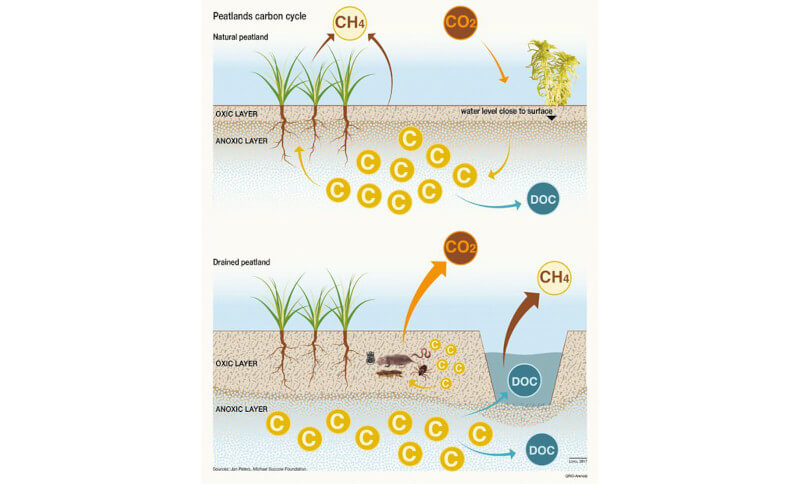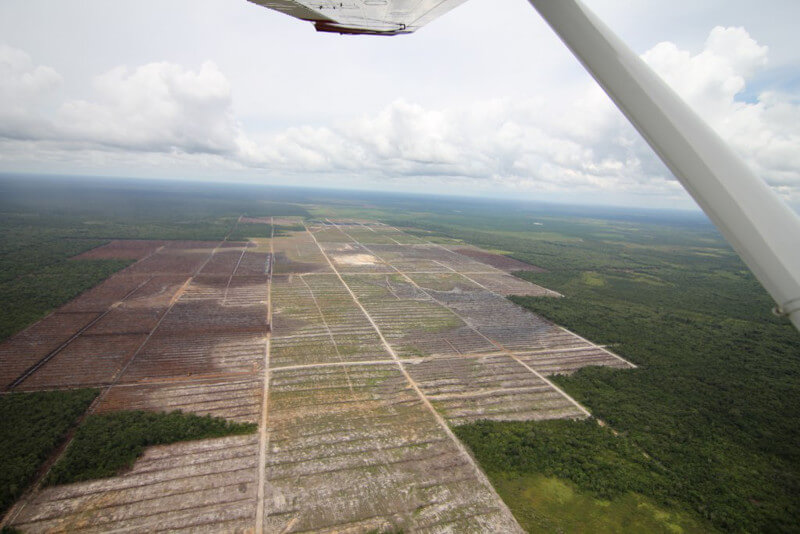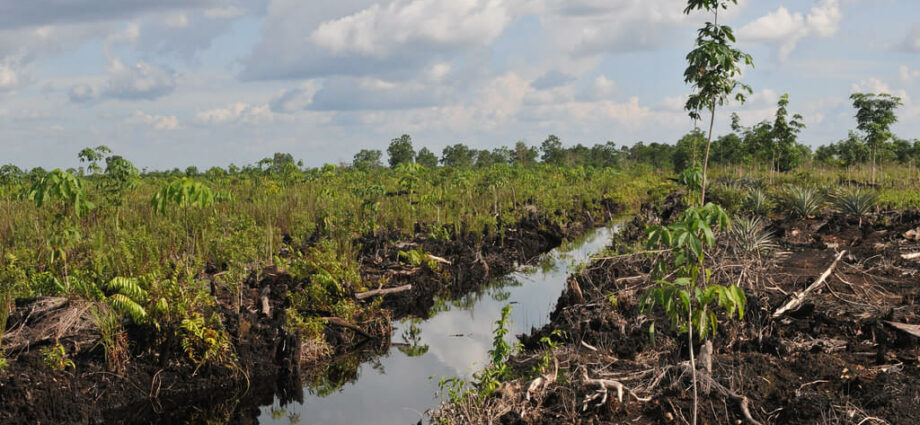The confluence of environmental conservation and the scotch whisky industry might seem unexpected. However, the discussion around peatland preservation and its usage in whisky production is not only timely but also imperative.
Peat Wetlands Become Carbon Warehouses
Peat wetlands, though limited in geographical spread, play a colossal role in carbon storage. They make up approximately 3% of the Earth’s surface, yet astoundingly, they safeguard twice the carbon stored in all forests globally. This puts them squarely in the spotlight of global environmental discussions. The ramifications of the United Nations Climate Change Conference (COP26) in 2021 reverberated the significance of halting over-extraction and urged global leaders to reinforce peatland protection.
Scotch’s Historical Ties to Peat
No discourse on scotch can be complete without acknowledging its intricate connection to peat. This wetland soil, primarily constituted of semi-decomposed organic matter, is indispensable to scotch production. It’s the peat fires, used in drying malted barley, that infuse the grains with the characteristic smoky flavor, especially revered in many whisky varieties.
This procedure of harnessing peat’s smoky attributes is particularly prevalent in Scotland’s Islay region, which has historically relied on abundant peatlands for fuel. However, while this tradition provides a distinct edge to scotch whiskies, it also poses ecological concerns.
The Ecological Imperative Of Peatlands

Angela Gallego-Sala, an expert in ecosystems at the University of Exeter, elucidated, “Globally, peatlands store as much carbon as there is in the atmosphere…we would not want all that carbon to be released.” To put it in perspective, UK peatlands alone lock in carbon equivalent to all the forests across France, Germany, and the UK combined.
An interesting juxtaposition arises when considering Scotch’s reliance on peat. While only a fraction of malt whiskies (around one-third) contain peat, the environmental implication of this practice becomes evident when considering that the 2014 UK horticulture peat use evaluation highlighted that whisky production accounted for nearly 6% of the nation’s peat extraction.
Balancing Tradition with Ecology
Whisky educator, Tracie Franklin, commented on the sector’s peat usage, stating, “It’s not the Scotch whisky industry that is necessarily causing the majority of the damage.” However, the Scotch Whisky Association (SWA) has been proactive, aligning with Scotland’s National Peatland Plan, to promote sustainable practices by 2035. SWA’s Ruth Piggin added, “Over the last decade, the industry has made good progress towards sustainability targets…Peat plays a significant role in natural carbon storage, so it only makes sense that our industry would make efforts to preserve and restore it.”
In a promising move, Beam Suntory, behind renowned scotch brands such as Laphroaig and Bowmore, committed to investing in the Peatland Water Sanctuary Initiative. This ambitious project seeks to conserve and restore peatlands equivalent to Beam Suntory’s annual peat harvest by 2030 and aims to double this commitment by 2040. Giants like Johnnie Walke, having recognized the ecological significance of peatlands, took decisive actions in their commitment to sustainability and environmental responsibility.
One of Johnnie Walker’s notable initiatives has been its collaboration with the Royal Society for the Protection of Birds (RSPB). This partnership aimed to actively restore and rejuvenate sections of damaged peatland in Scotland. By setting a target to restore approximately 88 hectares of degraded peatland by 2030, the brand underlined its dedication to counterbalance its peat usage in whisky production. This restoration not only aids in carbon sequestration but also plays a vital role in preserving the habitats of various endangered plant and animal species.
Their commitment extended beyond just peatland restoration. They have been actively working on transitioning all of their distilleries to renewable energy sources. Alongside, they have also set goals to elevate their sustainable packaging efforts by aiming to use a minimum of 60% recycled glass for their primary bottles by the end of the decade.
These steps, both direct and indirect, reflect their, among many brands, understanding of the intricate balance between tradition and sustainability. By investing in peatland conservation, they are not only ensuring the longevity of their brand’s iconic smoky flavors but also demonstrating a proactive approach to mitigating the environmental implications of their production processes. Such initiatives by industry giants set a precedent.
Innovations in Scotch Production
Amidst this ecological conundrum, the onus is on producers to innovate. One avenue is examining how peat influences flavor under varied conditions. “There’s a lot of different ways you can adjust the way that peat is used so you use less of it,” suggests Franklin. By leveraging modern technology in the malting process, it’s possible to reduce peat quantities without compromising on flavor profiles.
What Happens If Scotch Whiskey Distilleries Don’t Take Conservation Seriously?

If the conservation of peatlands is not diligently pursued, while their usage for Scotch whiskies continues unabated, the repercussions are manifold and significant:
- Elevated Carbon Emissions: Peatlands function as a significant carbon sink. Ignoring their conservation and continuing unchecked extraction would lead to the release of vast amounts of stored carbon. With peatlands holding twice as much carbon as the world’s forests, their degradation would substantially exacerbate global carbon levels, accelerating the challenges of climate change.
- Biodiversity Loss: Peatlands are home to a myriad of unique flora and fauna. Their degradation would lead to the loss of these specialized habitats, pushing many species towards endangerment or even extinction. This would disrupt the ecological balance and deplete the rich biodiversity that these wetlands house.
- Water Quality Decline: Peatlands play a crucial role in water filtration. Damaged peatlands can release vast amounts of organic carbon into water systems, affecting water quality and increasing costs for treatment. This can have downstream effects on both ecosystems and human communities.
- Economic Impact: The Scotch whisky industry, while culturally significant, also holds immense economic value. If peatlands, a vital resource for the industry, are rendered unusable or scarce, it could disrupt production and potentially elevate costs. This could ripple into higher prices for consumers and reduced profitability for producers.
- Shift in Flavor Profiles: Peat imparts a unique smoky flavor to Scotch whiskies, a character cherished by many enthusiasts. Unsustainable practices that deplete peat reserves might force the industry to seek alternative flavoring methods, which could alter the traditional taste profiles that fans have come to love.
- Increased Vulnerability to Flooding: Healthy peatlands act like sponges, absorbing and holding vast quantities of water. Degraded peatlands lose this capability, increasing the risk of floods, which can harm nearby communities, infrastructure, and other ecosystems.
- Reputation Risks for Brands: In an era where consumers are increasingly conscious of environmental responsibility, brands that ignore peatland conservation could face backlash. This can manifest in reduced brand loyalty, negative publicity, and potential declines in sales.
Consumer Sentiments and Market Dynamics
As consumers become increasingly environmentally conscious, distilleries are pressed to reflect this sentiment in their production methods. Nc’nean Distillery’s founder, Annabel Thomas, accentuated this point, noting, “There clearly does need to be some progress on how peated scotch deals with peat as one of its ingredients.”
The discourse around Scotch whisky and peatland conservation presents both challenges and opportunities. Balancing time-honored traditions with ecological imperatives is pivotal. With informed choices, collaborative initiatives, and innovative techniques, the industry can continue to produce the cherished smoky whiskies while playing its part in global environmental conservation.

